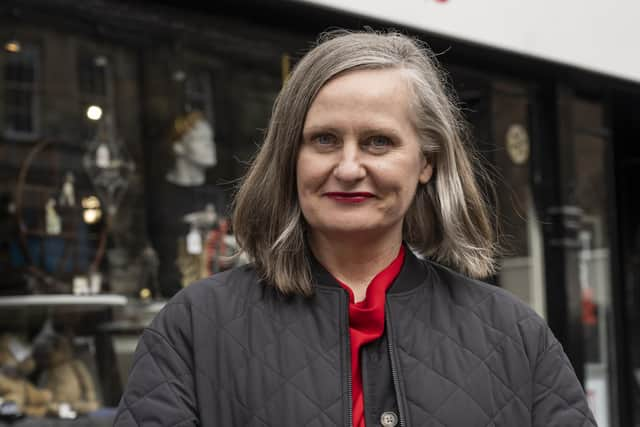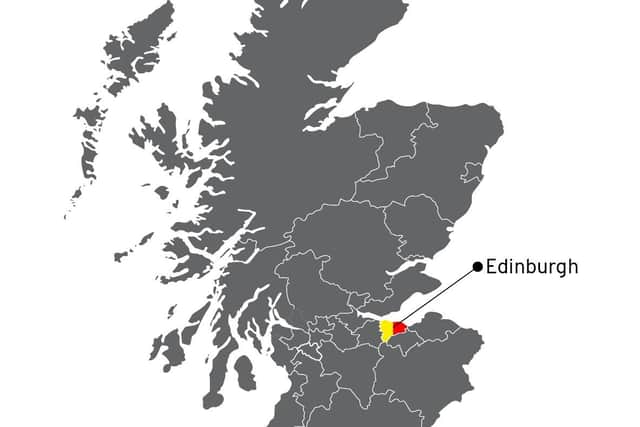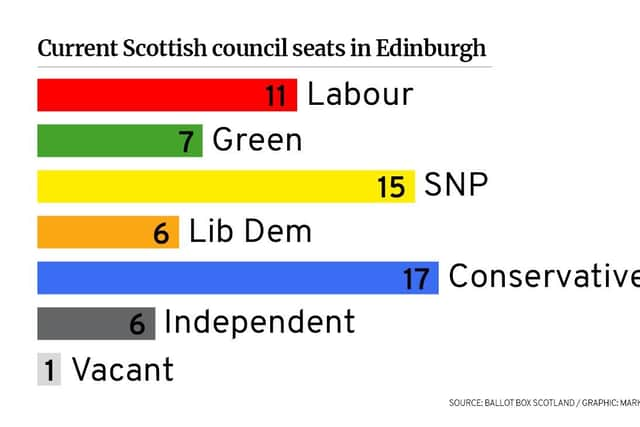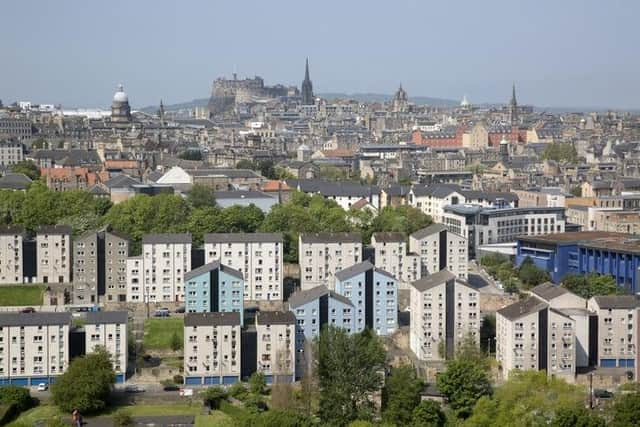Scottish council elections 2022: Edinburgh has highest house prices, highest rents and highest homelessness
Let us know what you think and join the conversation at the bottom of this article.
So it’s not surprising that housing is an issue that looms large in people’s minds and that all the parties have manifesto pledges about building more homes.
Shelter Scotland is running a campaign to highlight the urgent need for more social housing, asking the public to sign a petition demanding council leaders address the problem. More than 2,000 households in Edinburgh, including 1,500 children, are living in limbo, stuck in temporary accommodation, often in cramped, unsuitable conditions.
Advertisement
Hide AdAdvertisement
Hide AdShelter Scotland director Alison Watson says for families with children across Scotland, “temporary” means an average of 291 days, but in Edinburgh it’s 505 days. “What we see in Edinburgh is a much more acute version of the problem nationally,” she says. “It shows how acute the housing shortage is in Edinburgh.”
The city has the lowest proportion of social housing – council or housing association homes – in Scotland and Ms Watson says a minimum of 7,000 new social homes are needed over the next five years.
"Across Scotland and the UK we’ve had decades of under-investment in social housing,” she says. And right-to-buy saw the loss of 500,0000 social homes in Scotland.
Ms Watson praises the Scottish Government’s commitment to build 110,000 affordable homes by 2032, 70 per cent of them for social rent. But she says: “Those homes need to be built in the right places, where there is most acute housing need, and the most acute housing need in Scotland is in the capital.”


She notes 800 people accessed the city’s emergency winter accommodation for those who would otherwise be sleeping rough, adding: "That’s by far the greatest number anywhere in Scotland.”
Meanwhile, house prices in Edinburgh continue to rise, up 3.3 per cent in the first three months of 2022. Many expected the housing market to be flat after Covid, but Dr John Boyle, research director at Rettie & Co, says the end of lockdown saw a surge in demand.
Rettie saw applications for homes 40 per cent above pre-pandemic levels, while homes coming onto the market were the same as pre-pandemic.
"People started looking at their houses differently,” Dr Boyle says. “Some got sick of four walls, others decided to upsize or downsize or wanted a garden or were willing to move further out. That all led to a surge in demand and explains why prices have been rising.


Advertisement
Hide AdAdvertisement
Hide Ad“But the expectation is with the cost-of-living crisis and interest rates going up, there will be a slow-down in demand and the market should level out a bit.”
New housing developments are springing up on the edges of the city, many despite strong protests from existing residents concerned about extra traffic on already-congested roads and the lack of infrastructure, especially medical practices, to cater for the new population.
The proposal in the draft City Plan 2030 that future housebuilding should focus on brownfield sites with no new greenbelt land released for development has been welcomed by environmental campaigners. But critics claim the blueprint does not allocate enough land to meet demand.
Dr Boyle says the rate of housebuilding must speed up, adding: “The City Plan identifies the need for 41,000 new properties over next 12 years, but the city hasn’t been building at those levels for 20-odd years.


"If they don't build enough it will translate into higher house prices, which makes the city's housing more unaffordable to more people, leads to greater gentrification and local people being priced out. It also means people having to move into hinterland areas, like Fife, West Lothian, East Lothian or Midlothian, and raises questions of sustainability with commuting and so on.”
Projections of Edinburgh’s population growth have been scaled back recently, partly due to an expected fall in people coming to live here because of Brexit. But Dr Boyle says such projections are “a pretty inexact science”. He says there has been no noticeable Brexit effect yet, with continuing strong migration into the city. And official forecasts still show the population increasing.
Ms Watson says: “Edinburgh is a buoyant economy and an attractive tourist destination, but these create pressures on the local housing market.”
Airbnb-style short-term lets have been blamed for reducing the number of homes available for rent and one in six lets in the city are now said to be a short-term lets. Edinburgh rents have soared by an average of 41 per cent in the past decade, almost twice the rate of inflation.
Advertisement
Hide AdAdvertisement
Hide AdMs Watson says: “The average rent in the private-rented sector in Edinburgh is now over £1,300 a month. That’s a lot of money. Many people really struggle to pay those kind of rents.”
The Scottish Government is looking at new rent controls, but Ms Watson says an increase in social housing is just as important in bringing down private-sector rents.


The council’s target is 20,000 affordable homes between 2017 and 2027. Housing convener Kate Campbell says it had reached around 7,500 homes approved and ready for site start at the end of the financial year. But she says: “We’ve got the land, we’ve got the sites, we’ve got the funding in place, so we’re confident we will catch up and get back on track.” She said the administration had also doubled the number of council houses built and planned to expand that further.
And Ms Campbell said Edinburgh had been the first council to apply for a short-term-let control zone and wanted to be the first to implement new rent controls.
"There’s a lot of things we have to do on housing and not one alone will fix it, but bringing back short-term lets into use as homes, managing private rents through rent controls and increasing social and affordable housing are things we hope will start to make a difference.”
Comments
Want to join the conversation? Please or to comment on this article.